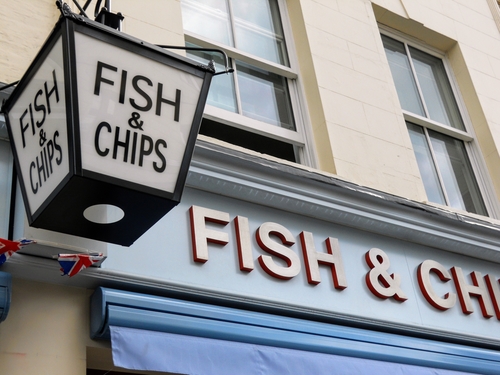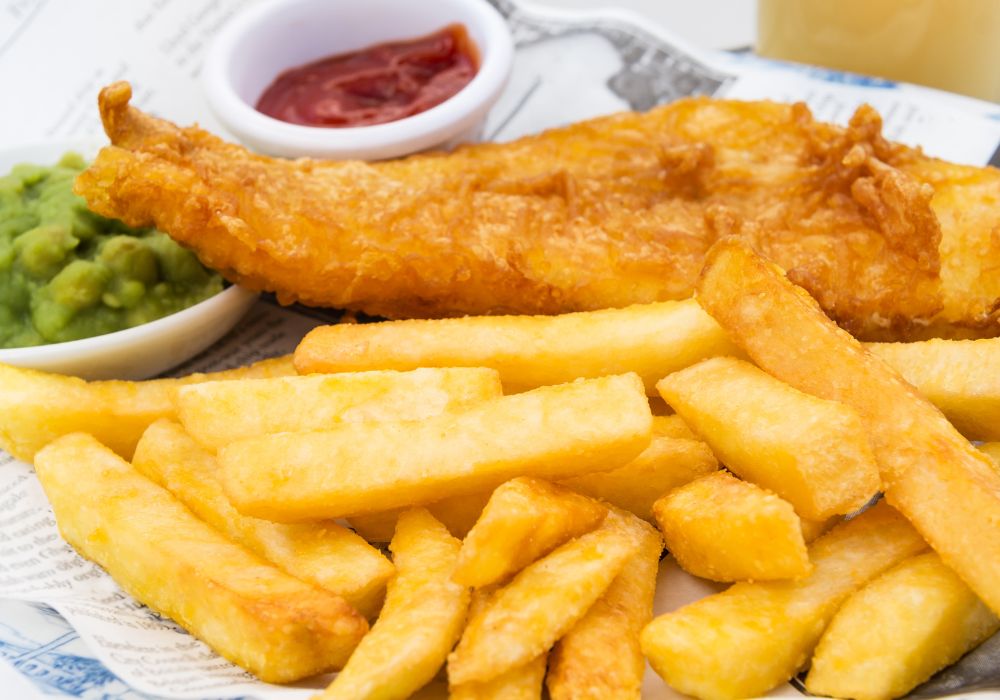The UK has a long and proud tradition of enjoying great quality, quick-service takeaway food. From Indian curries to Turkish kebabs to Japanese noodles, we want it all, we want it now and we want even more of it.
Walk down the high street of any British town and you’ll see plenty of evidence of this increasing demand for quick, convenient food. And there’s cold hard data to back it up too.
Busy Brits are eating out more than ever
Global market research company the NPD Group conducted a study that showed that UK quick-service restaurants (QSR) have received 9.2% more visits than they did in 2019. While this growth is very promising as a whole, there is an old but very familiar straggler in its midsts – fish and chips.
Despite general growth in fast food consumption in the UK, fish and chip shops as a whole are starting to lag behind in the competition. Now, chippies only make up 5.6% of total QSRs in the UK, a slight but noticeable drop from 6.4% in 2009.
So why are fish and chip shops lagging behind?
When studying any issue that is affected by multiple factors, it can be hard to put your finger on any one cause. However, the NDP Group data does give us a pretty good indication.
Millennials – people between the ages of 18 to 30 – currently make up 30% of all QSR visits, yet they only constitute 15% of total visits to fish and chip shops. That’s a lot of potential revenue that chippies are missing out on, and the number seems to be on the rise.
Missing out on lunchtime trade
Some argue that younger generations are overlooking traditional chippies in favour of more modern and versatile establishments like chicken shops or burger chains. One of the suggested reasons for this is that chippies are generally lacking in lunchtime options.
According to the NPD Group data, over 35% of visits to QSR outlets occur during lunchtime hours. For fish and chip shops, however, only 24% of their visits are from lunchtime trade.
Many chippies, especially outside of London, are still closed at lunchtime. Those that choose to open often do not have menus fitting for a lunchtime clientele. Generous fish supper portions are generally not what punters are looking for on their lunch break, so often turn to smaller, lighter alternatives.
Versatile menus and special deals
The NPD reports that nearly three out of 10 QSR visits involve special deals – such as lunchtime promotions – while that figure drops to only 1 in 14 for fish and chip shops.
Some pioneering chippies are already waking up to this opportunity, offering smaller lunch-sized portions that match other QSRs speed, convenience, and value, while blowing them out of the water when it comes to taste.
For example, fish and chip shop supplier Friars Pride produces “Lite-Bite Boxes”, which allow chippies to serve up smaller portions of their great tasting goods.
Giving customers the choice to purchase something lighter will not only attract more lunchtime trade, it will also appeal to increasingly health-conscious younger generations. (As we covered in another post, offering vegan and vegetarian fish and chip options will also go a long way to adapting to more modern tastes and sensibilities).
A word to the wise from an industry expert
Cyril Lavenant, Foodservice Director UK for the NPD Group, had this to say:
“With the exception of two types of quick-service food – fish and chips as well as ‘ethnic’ takeaways such as kebabs – all of the quick service channels in Britain have managed to grow since the 2008/2009 recession because they have transformed their business.
“The British foodservice market could be worth more than £57 billion by the end of 2018 and attracting 11.5 billion visits each year. But the nation’s fish and chip operators must adapt to changing trends if they want a slice of that success.
“When was the last time you saw an exciting meal promotion at your local fish and chip shop that matches the kind of thing you see when you buy a burger or fried chicken? Fish and chip shops need to build on their reputation for quality, bring in the lunchtime traffic, and match the big quick-service competitors with lively meal deals.”
People still prefer the quality of fish and chips over any other
Despite reporting on the slight lag in popularity for fish and chips, the NPD Group data did highlight that consumers still love the quality of good, old-fashioned fried fish and chips. Over a third of people visiting chippies did so for the quality of the food offered, while that was only a motivating factor for a quarter of people visiting other QSR outlets.
It’s not just us that thinks fish and chips offers the best quality fare on the high street, the evidence suggests that the majority of the UK does too.
Capitalising on lunchtime trade and wrangling those pesky millennials will all be in vain if your food is not up to scratch, and that all comes down to the quality of your oil. Frymax has been the frying oil of choice in the chippy trade for over 70 years. Get in touch with the Frymax team today to learn more about our long lasting and fully sustainable deep frying oil.
Become a Frymax member today to gain access to exclusive content, expert frying advice and the chance to enter our fantastic competitions.






